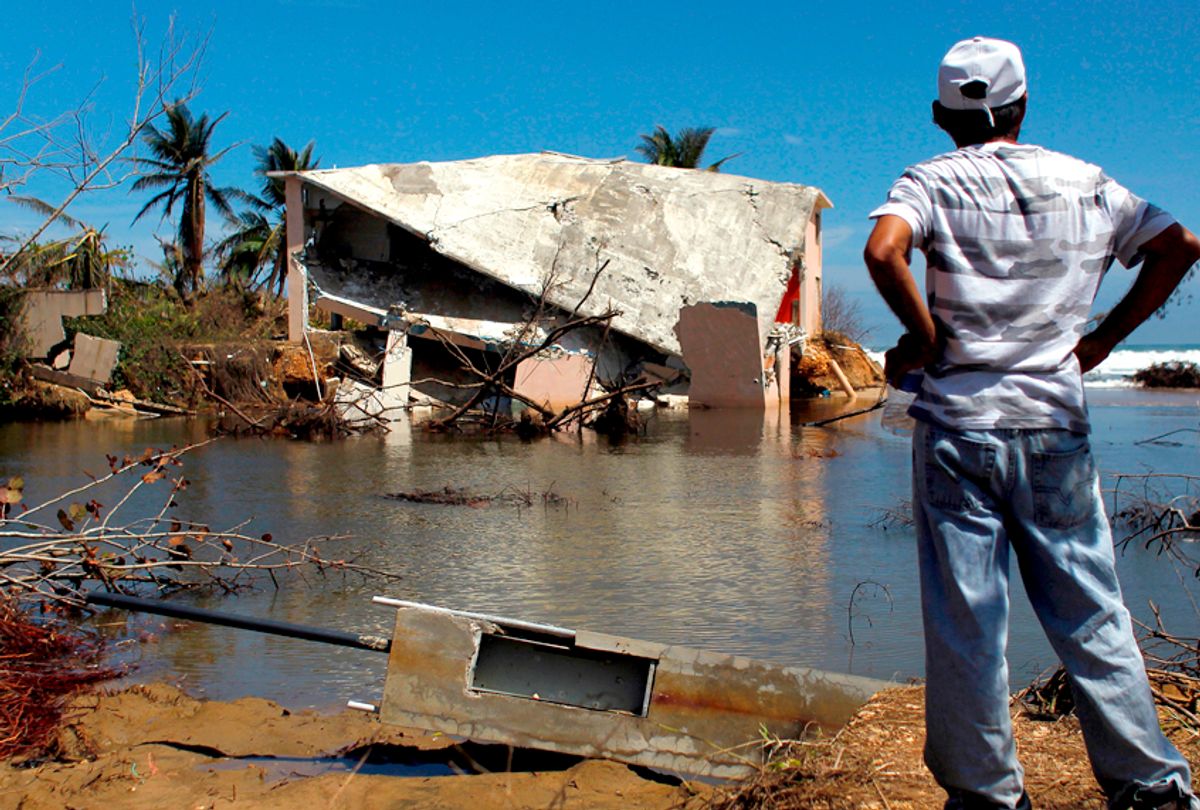Independent researchers from the George Washington University have estimated that 2,975 died in Puerto Rico in the six months following Hurricane Maria in 2017 – a far cry from the government's original official death toll of 64. The authors of the study also found that individuals in low-income areas and elderly men were most at risk for death on the island from September 2017 through February 2018.
The researchers' findings had been much anticipated. Puerto Rico Governor Ricardo Rosselló ordered the George Washington University study in February in the face of mounting public pressure over his administration's failure to adequately count the number of deaths in the storm's aftermath.
"The results of our epidemiological study suggest that, tragically, Hurricane Maria led to a large number of excess deaths throughout the island," said Dr. Carlos Santos-Burgoa, the principal investigator of the project and a professor of global health at George Washington University Milken Institute School of Public Health. "We hope this report and its recommendations will help build the island's resilience and pave the way toward a plan that will protect all sectors of society in times of natural disasters."
In the aftermath of the catastrophic storm, which tore through Puerto Rico last September, the government's official death toll has held steady at 64, despite several academic assessments that asserted that the official death count does not come close to the actual one. The government of Puerto Rico even acknowledged that figure was likely inaccurate and would be adjusted once the George Washington researchers completed their analysis.
In addition to their new death count estimate, researchers found that the Puerto Rican government failed to properly communicate with the public about the death toll and address misinformation. The researchers also said that the government did not have an adequate disaster communications plan in place, which they said contributed to public confusion and cast doubts about the government's transparency. Based on interviews they conducted with health and forensics officials on the island, researchers additionally concluded that many officials were unaware of how to document hurricane-related deaths.
In the absence of a thorough effort by Puerto Rico's government to count its dead, several media outlets and independent researchers attempted to arrive at their own estimates about the death toll. Most recently, a study conducted by Harvard University and published in the New England Journal of Medicine concluded that Hurricane Maria claimed the lives of at least 4,645 people.
That study, which used household surveys, had a wide margin of error and noted that that Puerto Rican officials had declined to release mortality statistics that could provide clarity on the true death count after Maria. The George Washington researchers said their analysis is more accurate, because the findings are based on access to government mortality data and death certificates and accounted for the number of people believed to have left Puerto Rico following the hurricane.
To get at the 2,975 figure, the study analyzed historical death patterns from 2010 to 2017 to estimate how many people would have died had Hurricane Maria not made landfall. That number was then compared to the actual number of deaths from September 2017 through February 2018 — obtained in records provided by Puerto Rico's Department of Health — to determine what the study describes as the "estimate of excess mortality due to the hurricane."
The study found that while all age groups and socioeconomic groups were affected by the hurricane, the risk of death was "45 percent higher and persistent until the end of the study period for populations living in low socioeconomic development municipalities."
"Overall, we estimate that 40 percent of municipalities experienced significantly higher mortality in the study period than in the comparable period of the previous two years," the report added.
After Puerto Rico's governor stated that only 16 people were known to have died following the storm, President Donald Trump ran with that figure back in October.
"Sixteen people certified! Sixteen people versus in the thousands," Trump boasted at the time. "You can be very proud of all of your people and all of our people working together. Sixteen versus literally thousands of people. You can be very proud. Everybody watching can really be very proud of what’s taken place in Puerto Rico."

Shares